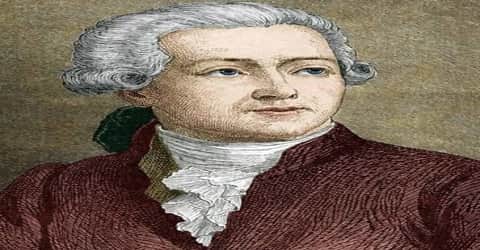Biography of Antoine-Laurent de Lavoisier
Antoine-Laurent de Lavoisier – French lawyer, economist and chemist.
Name: Antoine-Laurent de Lavoisier
Date of Birth: 26 August 1743
Place of Birth: Paris, France
Date of Death: 8 May 1794 (aged 50)
Place of Death: Paris, France
Cause of death: Execution by guillotine
Spouse: Marie-Anne Paulze Lavoisier (m. 1771–1794)
Early Life
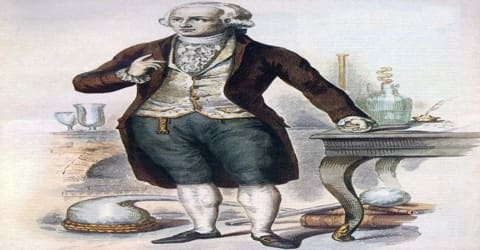
Antoine-Laurent de Lavoisier (also Antoine Lavoisier after the French Revolution; French: (ɑ̃twan lɔʁɑ̃ də lavwazje)) was a French lawyer, economist, and chemist. He was born August 26, 1743, Paris, France.
Lavoisier was the first child and only son of a wealthy bourgeois family living in Paris. As a youth, he exhibited an unusual studiousness and concern for the public good. After being introduced to the humanities and sciences at the prestigious Collège Mazarin, he studied law. Since the Paris law faculty made few demands on its students, Lavoisier was able to spend much of his three years as a law student attending public and private lectures on chemistry and physics and working under the tutelage of leading naturalists. Upon completing his legal studies, Lavoisier, like his father and his maternal grandfather before him, was admitted to the elite Order of Barristers, whose members presented cases before the High Court (Parlement) of Paris.
He was elected a member of the French Academy of Sciences, France’s most elite scientific society, at the age of 25 in 1768 for an essay on street lighting and in recognition for his earlier research. In 1769 he worked on the first geological map of France.
The “father of modern chemistry,” he stated the first version of the Law of conservation of matter, recognized and named oxygen (1778), disproved the phlogiston theory, introduced the Metric system, invented the first periodic table including 33 elements, and helped to reform chemical nomenclature. He was also an investor and administrator of the “Ferme Generale,” a private tax collection company; chairman of the board of the Discount Bank (later the Banque de France); and a powerful member of a number of other aristocratic administrative councils.
Lavoisier was a powerful member of a number of aristocratic councils and an administrator of the Ferme générale. The Ferme générale was one of the most hated components of the Ancien Régime because of the profits it took at the expense of the state, the secrecy of the terms of its contracts, and the violence of its armed agents. All of these political and economic activities enabled him to fund his scientific research. At the height of the French Revolution, he was charged with tax fraud and selling adulterated tobacco, and was guillotined.
Lavoisier’s experiments were among the first truly quantitative chemical experiments ever performed; that is, he carefully weighed the reactants and products involved, a crucial step in the advancement of chemistry. He showed that, although matter can change its state in a chemical reaction, the quantity of matter is the same at the end as at the beginning of every chemical reaction. He burnt phosphorus and sulfur in the air and proved that the products weighed more than the original. Nevertheless, the weight gained was lost from the air. These experiments provided evidence for the law of the conservation of matter, or in other words, the law of conservation of mass.
Some of Lavoisier’s most important experiments examined the nature of combustion or burning. Through these experiments, he demonstrated that burning is a process that involves the combination of a substance with oxygen. He also demonstrated the role of oxygen in metal rusting, as well as its role in animal and plant respiration: working with Pierre-Simon Laplace, Lavoisier conducted experiments that showed that respiration was essentially a slow combustion of organic material using inhaled oxygen. Lavoisier’s explanation of combustion replaced the phlogiston theory, which postulates that materials release a substance called phlogiston when they burn.
Childhood, Family and Educational Life

Antoine-Laurent Lavoisier was born to a wealthy family of the nobility in Paris on 26 August 1743. Born to a wealthy family in Paris, Antoine Laurent Lavoisier inherited a large fortune when his mother died. He attended the College Mazarin from 1754 to 1761, studying chemistry, botany, astronomy, and mathematics. His education was filled with the ideals of the French Enlightenment of the time, and he felt fascination for Maquois’s dictionary. His devotion and passion for chemistry were largely influenced by Etienne Condillac, a prominent French scholar of the 18th century.
In the philosophy class, he came under the tutelage of Abbé Nicolas Louis de Lacaille, a distinguished mathematician and observational astronomer who imbued the young Lavoisier with an interest in meteorological observation, an enthusiasm which never left him. Lavoisier entered the school of law, where he received a bachelor’s degree in 1763 and a licentiate in 1764. Lavoisier received a law degree and was admitted to the bar, but never practiced as a lawyer. However, he continued his scientific education in his spare time.
His first chemical publication appeared in 1764. In 1767 he worked on a geological survey of Alsace-Lorraine. He was elected a member of the French Academy of Sciences, France’s most elite scientific society, at the age of 25 in 1768 for an essay on street lighting and in recognition for his earlier research. In 1769 he worked on the first geological map of France.
Personal Life
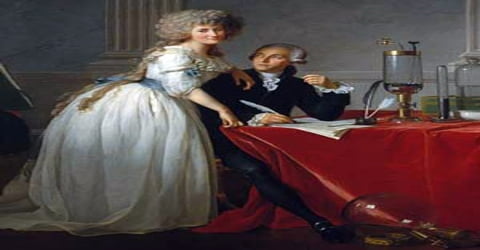
In 1771, he married 13-year-old Marie-Anne Pierette Paulze, the daughter of a co-owner of the Ferme. With time, she proved to be a scientific colleague to her husband. Marie Anne was a spirited and intelligent young woman who created a place for herself in a world of science that provided few opportunities for women. As Marie Anne and Lavoisier had no children, Marie Anne was able to devote her attention to helping her husband in his research, and she soon became widely regarded as a valuable laboratory assistant and hostess. She mastered English. She translated documents from English for him, including Richard Kirwan’s “Essay on Phlogiston” and Joseph Priestley’s research. She created many sketches and carved engravings of the laboratory instruments used by Lavoisier and his colleagues. She also edited and published Lavoisier’s memoirs and hosted many parties during which eminent scientists would discuss new chemical theories. As a result of her close work with her husband, it is difficult to separate her individual contributions from his, but it is correctly assumed that much of the work accredited to him bears her fingerprints.
A portrait of Antoine and Marie-Anne Lavoisier was painted by the famed artist Jacques-Louis David. Completed in 1788 on the eve of the Revolution, the painting was denied a customary public display at the Paris Salon for fear that it might inflame anti-aristocratic passions.
Career and Works
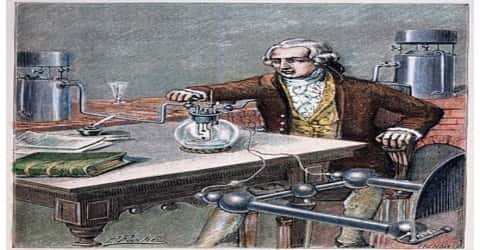
While Lavoisier is commonly known for his contributions to the sciences, he also dedicated a significant portion of his fortune and work toward benefitting the public. Lavoisier was a humanitarian – he cared deeply about the people in his country and often concerned himself with improving the livelihood of the population by agriculture, industry, and the sciences. The first instance of this occurred in 1765 when he submitted an essay on improving urban street lighting to the French Academy of Sciences.
It was previously claimed that the elements were distinguishable by certain physical properties: water and earth were incompressible; air could be both expanded and compressed, whereas fire could not be either contained or measured. In the 1720s the English cleric and natural philosopher Stephen Hales demonstrated that atmospheric air loses its “spring” (i.e., elasticity) once it becomes “fixed” in solids and liquids. Perhaps, Hales suggested, air was really just a vapour like steam, and its spring, rather than being an essential property of the element, was created by heat. Hales’s experiments were an important first step in the experimental study of specific airs or gases, a subject that came to be called pneumatic chemistry.
In the 1750s the Scottish chemist Joseph Black demonstrated experimentally that the air fixed in certain reactions is chemically different from common air. Black wanted to know why slaked quicklime (hydrated calcium oxide) was neutralized when exposed to the atmosphere. He found that it absorbed only one component of the atmosphere, carbon dioxide, which he called “fixed air.” Black’s work marked the beginning of investigative efforts devoted to identifying chemically distinct airs, an area of research that grew rapidly during the latter half of the century. Thus, pneumatic chemistry was a lively subject at the time Lavoisier became interested in a particular set of problems that involved air: the linked phenomena of combustion, respiration, and what 18th-century chemists called calcination (the change of metals to a powder (calx), such as that obtained by the rusting of iron).
The Farmers General held a monopoly of the production, import, and sale of tobacco in France, and the taxes they levied on tobacco brought revenues of 30 million livres a year. However, this revenue began to fall because of a growing black market in tobacco that was smuggled and adulterated, most commonly with ash and water. Lavoisier devised a method of checking whether ash had been mixed in with tobacco: “When a spirit of vitriol, aqua fortis or some other acid solution is poured on ash, there is an immediate very intense effervescent reaction, accompanied by an easily detected noise.” Lavoisier also noticed that the addition of a small amount of ash improved the flavor of tobacco. Of one vendor selling adulterated goods, he wrote “His tobacco enjoys a very good reputation in the province… the very small proportion of ash that is added gives it a particularly pungent flavor that consumers look for.
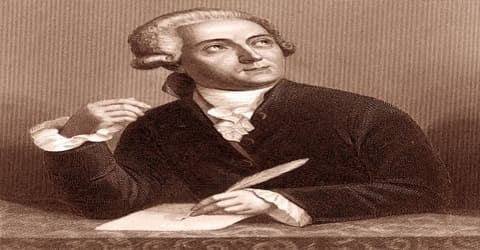
Lavoisier was fortunate in having made his contributions to the chemical revolution before the disruptions of political revolution. By 1785 his new theory of combustion was gaining support, and the campaign to reconstruct chemistry according to its precepts began. One tactic to enhance the wide acceptance of his new theory was to propose a related method of naming chemical substances. In 1787 Lavoisier and three prominent colleagues published a new nomenclature of chemistry, and it was soon widely accepted, thanks largely to Lavoisier’s eminence and the cultural authority of Paris and the Academy of Sciences. Its fundamentals remain the method of chemical nomenclature in use today. Two years later Lavoisier published a programmatic Traité élémentaire de Chimie (Elementary Treatise on Chemistry) that described the precise methods chemists should employ when investigating, organizing, and explaining their subjects. It was a worthy culmination of a determined and largely successful program to reinvent chemistry as a modern science.
Lavoisier also took on administrative duties within the Academy of Sciences and in other government agencies during the final years of the monarchy and the early years of the French Revolution. From 1775 to 1792 he served as a director of the French Gunpowder Administration and succeeded in making France self-sufficient in this critical military material. He also conducted extensive experiments on agricultural production, advised the government on financial affairs and banking, and served on a commission whose efforts to unify weights and measures led to the adoption of the metric system. Lavoisier has rightly gained renown for his scientific achievements, but his efforts on behalf of France should also be remembered.
In June 1791 Lavoisier made a loan of 71,000 livres to Pierre Samuel du Pont de Nemours to buy a printing works so that du Pont could publish a newspaper, La Correspondance Patriotique. The plan was for this to include both reports of debates in the National Constituent Assembly as well as papers from the Academy of Sciences. The revolution quickly disrupted the elder du Pont’s first newspaper, but his son E.I. du Pont soon launched Le Republicain and published Lavoisier’s latest chemistry texts. Lavoisier also chaired the commission set up to establish a uniform system of weights and measures which in March 1791 recommended the adoption of the metric system. The new system of weights and measures was adopted by the Convention on 1 August 1793. Lavoisier himself was removed from the commission on weights and measures on 23 December 1793, together with Laplace and several other members, for political reasons. One of his last major works was a proposal to the National Convention for the reform of French education. He also intervened on behalf of a number of foreign-born scientists including mathematician Joseph Louis Lagrange, which helped to exempt them from a mandate stripping all foreigners of possessions and freedom.
The post-revolutionary French government took a dim view of foreign-born scientists in France and passed a mandate that denied foreign scientists their freedom and possessions. Prior to the Revolution, Paris was considered one of the best places for scientists to come from across Europe and the French Academy of Sciences was world renown. Lavoisier disagreed with the government’s stance and was outspoken in the defense of foreign scientists. For this, he was branded a traitor to France and tried, convicted, and guillotined all in the same day.
In May 1794 Lavoisier, his father-in-law, and 26 other Tax Farmers were guillotined. Acknowledging Lavoisier’s scientific stature, his contemporary, Joseph-Louis Lagrange, commented, “It took them only an instant to cut off that head, and a hundred years may not produce another like it.”
Awards and Honours
During his lifetime, Lavoisier was awarded a gold medal by the King of France for his work on urban street lighting (1766) and was appointed to the French Academy of Sciences (1768).
Lavoisier’s work was recognized as an International Historic Chemical Landmark by the American Chemical Society, Académie des sciences de L’institut de France and the Société Chimique de France in 1999. Antoine Laurent Lavoisier’s Louis 1788 publication entitled Méthode de Nomenclature Chimique, published with colleagues Louis-Bernard Guyton de Morveau, Claude Louis Berthollet, and Antoine François, Comte de Fourcroy, was honored by a Citation for Chemical Breakthrough Award from the Division of History of Chemistry of the American Chemical Society, presented at the Académie des Sciences (Paris) in 2015.
A number of Lavoisier Medals have been named and given in Lavoisier’s honor, by organizations including the Société chimique de France, the International Society for Biological Calorimetry, and the DuPont Company.

Death and Legacy
Antoine-Laurent Lavoisier died May 8, 1794, in Paris, France at the age of 50. A year and a half after his death, Lavoisier was exonerated by the French government. During the White Terror, his belongings were delivered to his widow. A brief note was included, reading “To the widow of Lavoisier, who was falsely convicted”.
About a century after his death, a statue of Lavoisier was erected in Paris. It was later discovered that the sculptor had not actually copied Lavoisier’s head for the statue, but used a spare head of the Marquis de Condorcet, the Secretary of the Academy of Sciences during Lavoisier’s last years. Lack of money prevented alterations from being made. The statue was melted down during the Second World War and has not been replaced. However, one of the main “lycées” (high schools) in Paris and a street in the 8th arrondissement are named after Lavoisier, and statues of him are found on the Hôtel de Ville and on the façade of the Cour Napoléon of the Louvre. His name is one of the 72 names of eminent French scientists, engineers, and mathematicians inscribed on the Eiffel Tower as well as on buildings around Killian Court at MIT in Cambridge, MA US.
Information Source:
